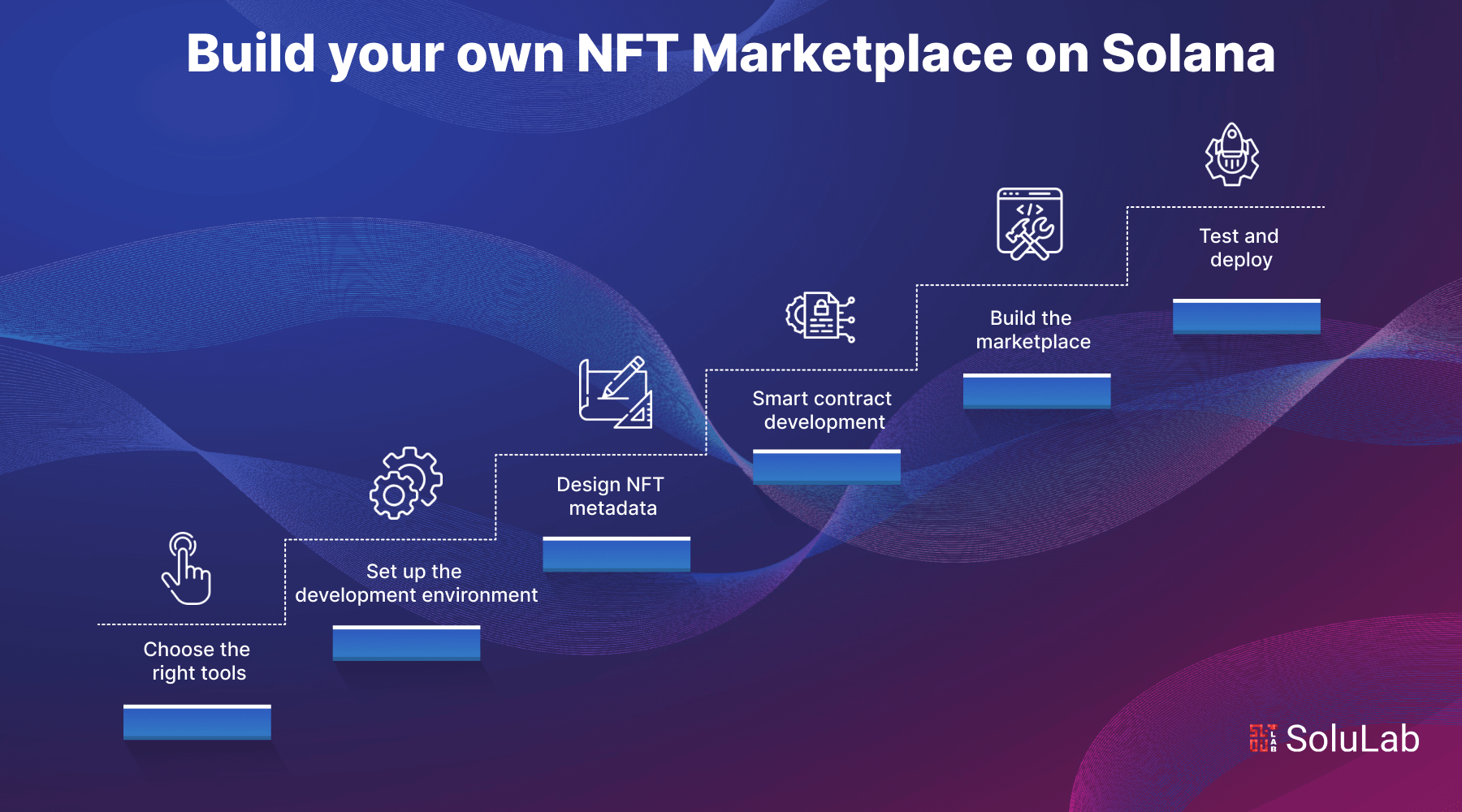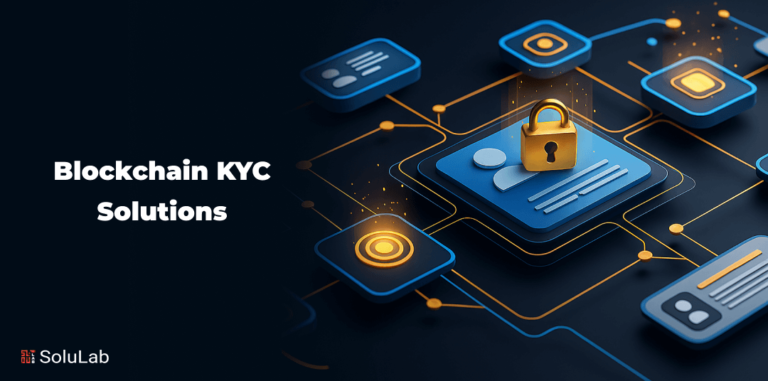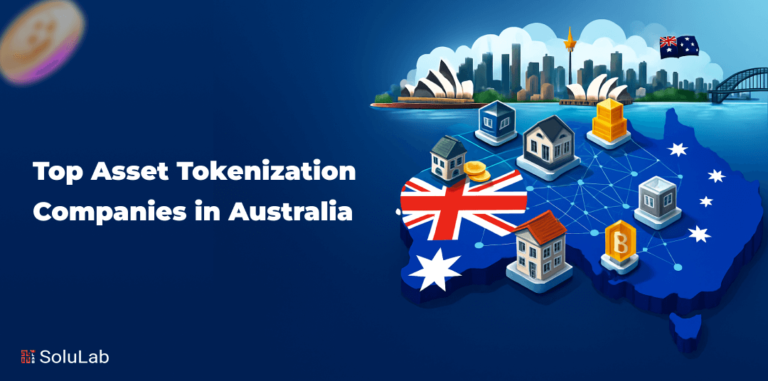
As reported by Delphi Digital, a crypto research platform, Solana’s market share within the NFT market has experienced significant growth, expanding from 6% to 14% in less than a year. This claim aligns with the data provided by Cryptoslam, an aggregator in the NFT space.
The Ethereum blockchain claimed 81% of the NFT sales volume, down 5% from 86% in 2022. While Solana possessed 14% of the total NFT sales volume, the next highest is tied between Immutable X, Cardano, Polygon, Flow, and BNB, each with only 1% of the NFT sales volume from February 2022 to February 2023.
Fundamentals Of NFTs
By exploring the value of non-fungible tokens, you can uncover the answer to “Why should I create NFTs on Solana?” NFTs, or non-fungible tokens, are unique crypto assets with distinct on-chain signatures. These represent various digital assets, including digital art, certificates, virtual collectibles, online tickets, and proof of ownership on blockchain networks.
The true value of Solana NFTs lies in their ability to verify the uniqueness of a specific asset through cryptographic proof. Before embarking on Solana NFT projects, it is vital to understand that NFTs come in various forms, such as MP3s, PDFs, JPEGs, MP4s, and PNGs. However, while these files serve as tangible aspects of NFTs, they can be copied like any other digital file.
When utilizing the Solana NFT maker tool, you are essentially minting NFTs or storing NFT metadata with unique cryptographic identifiers on the blockchain. Creating an NFT requires an on-chain transaction, and the details included in the NFT metadata will vary based on the type of NFT standard.
What Is An NFT Marketplace?
In digital asset exchange, Sol NFT marketplaces share similarities with e-commerce platforms, enabling the trade of various items. However, the distinction lies in the nature of the goods being traded. While e-commerce platforms facilitate the buying and selling of physical goods, Sol NFT marketplaces focus solely on digital assets known as NFTs.
To cater to the unique requirements of NFT trading, developers of NFT marketplaces integrate a range of globally accepted and recommended features. These features are designed to ensure a smooth and seamless trading experience for users, eliminating potential obstacles and enhancing the overall functionality of the marketplace.
The Top Features Of An NFT Marketplace
NFT marketplaces have emerged as prominent platforms for trading digital assets known as NFTs. These marketplaces share similarities with e-commerce platforms but cater specifically to NFTs. When building an NFT marketplace on Solana, developers integrate a range of globally accepted and recommended features. These features are designed to ensure a smooth and seamless trading experience for users, eliminating potential obstacles and enhancing the overall functionality of the marketplace. Some of the top features of an NFT marketplace include:
1. Crypto Wallet
In an NFT marketplace, the user’s crypto wallet serves as a crucial component, facilitating every NFT transaction. To ensure seamless trading, the user must establish a synchronized connection between their crypto wallet and the NFT Marketplace. Metamask and Coinbase stand as prominent examples of widely recognized NFT wallets in today’s market, which are often integrated by a solana NFT marketplace development company.
2. Shop Window
To enhance the visibility and marketability of NFTs, marketplaces must provide comprehensive information, including price, ownership details, and a detailed description. Additionally, implementing a shop window feature within NFT marketplaces can significantly increase the likelihood of successful sales by creating an engaging and user-friendly browsing experience for potential buyers.
3. Registration Process
An NFT marketplace must feature a powerful search engine, enabling users to swiftly locate NFTs related to music, videos, or photography. To ensure accuracy and relevance, the search algorithm should possess the ability to discern the user’s intent and purpose, presenting correct information instantaneously.
4. A Search Feature
NFT marketplaces should facilitate the recording, storage, and presentation of comprehensive user history, including trading data, transaction history, and details of approved, purchased, and sold NFTs. This functionality necessitates the platform’s integration of robust user management capabilities.
5. User history
In order to facilitate efficient tracking and transparency, NFT marketplaces should possess the capability to meticulously record, securely store, and visually present the complete history of user interactions. This encompasses not only trading data and transaction records but also the documentation of NFTs that have been approved, purchased, and sold. If you’re looking to make NFT on Solana, the implementation of this feature necessitates the integration of comprehensive user management functionalities into the platform’s architecture.
6. Alerts
To enhance user engagement and facilitate timely decision-making, the NFT marketplace should incorporate a robust notification system. This system should leverage the user’s transaction and search history to send personalized alerts and notifications regarding new NFT listings. By receiving instant notifications, users can assess the potential value and relevance of the new NFT, enabling them to make informed decisions about their next actions within the marketplace, particularly in the context of Solana NFT marketplace development.
7. Support
To provide a seamless NFT trading experience for users, NFT marketplaces should incorporate a comprehensive customer support system that offers chat/live call options and a knowledge center to address all user inquiries effectively.
These key components help ensure a smooth NFT trading process. Having explored the structure and functioning of NFT marketplaces, let’s delve into why Solana stands out as the preferred platform for developing Solana NFT smart contracts.
Why To Develop NFT Marketplace On Solana?
Solana, an open-source blockchain network, Increases transaction speeds through its innovative Proof of History (PoH) consensus model. Designed to support decentralized and scalable applications, Solana outperforms numerous legacy blockchains, such as Ethereum, in transaction processing speed and offers significantly lower gas fees. This has attracted entrepreneurs, investors, and content creators who flock to Solana not only to create NFTs but also to establish marketplaces facilitating NFT trading. Furthermore, the Solana NFT launchpad and minting provisions provide creators with unparalleled flexibility. Let’s explore the advantages of leveraging a Solana NFT marketplace for your business.
-
Transactions
The Solana blockchain showcases its remarkable speed by processing an impressive 2500 transactions per second. This swiftness ensures that transactions made on any Solana custom NFT marketplace are completed instantaneously. However, it’s essential to note that transactions per second (TPS) are based on a metric that is calculated based on runtime data, such as measurements taken while a program is running subject to fluctuations over time.
-
Cost
Solana is the ideal platform for creating NFTs and NFT marketplaces of various sizes, thanks to its high throughput and low transaction fees of $0.00025. If you’re wondering how to create an NFT on Solana, the platform’s impressive throughput and incredibly low transaction fees make it the optimal choice for developing NFTs and NFT marketplaces of diverse scales.
-
Mempool Issue
Within the Solana network, there is no concept of a mempool. The mempool is a temporary storage area where processed transactions are held before they are validated and added to the blockchain. The absence of a mempool in Solana eliminates transaction delays, allowing for instant transactions on its Solana NFT marketplace. This feature enables faster and smoother trading experiences for users, ensuring that transactions are confirmed and processed swiftly.
-
Environment
Within the profitable Solana ecosystem, network congestion is effectively managed, enabling the simultaneous operation of multiple decentralized applications (dApps), smart contracts, and cryptocurrencies.
-
Programming
With its Rust-based software, Solana’s blockchain simplifies programming and enables the development of diverse applications. This flexibility makes Solana an ideal platform for building NFT marketplaces, dApps, and other solutions, offering developers a versatile environment to bring their ideas to life.
How To Create An NFT Marketplace On Solana?
NFT marketplaces have emerged as popular platforms for trading digital assets such as art, music, and collectibles. To ensure a seamless NFT trading experience for users, several key components must be incorporated into an NFT marketplace, including a user-friendly interface, a powerful search engine, comprehensive user history, and robust customer support. By integrating these features, Solana NFT development can provide users with an engaging and efficient trading environment.
1. SOL Wallet
Starting an NFT marketplace requires you to first set up a browser wallet. Given Solana’s compatibility with a wide range of browser wallets, you have the flexibility to choose your preferred platform. After creating your wallet, ensure it is funded with SOL tokens to facilitate transactions within your marketplace.
2. Metaplex Repository
To ensure easy hosting on GitHub pages, navigate to your GitHub account and fork the Metaplex repository. Afterward, proceed to copy all the Metaplex files onto your system.
- On your desktop, create a new folder named “myNFTMarketplace.”
- Copy the path to the newly created folder.
- In your command line, navigate to the “myNFTMarketplace” folder using the “cd” command followed by the folder’s path.
To proceed, navigate to the folder you created and clone the repository there.
To create a repository in your personal GitHub account, you can duplicate all the Metaplex repository files into your directory by following these steps:
1. Navigate to the Metaplex repository on GitHub.
2. Click on the “Fork” button in the top-right corner.
3. Select your personal GitHub account as the destination for the fork.
4. Click on the “Confirm fork” button.
5. Clone the forked repository to your local machine.
6. Change the directory to the cloned repository.
7. Add the original Metaplex repository as a remote.
8. Push your local changes to your forked repository.
3. Github Address
To ensure a successful online marketplace launch and maximize its success, consider implementing the following essential steps:
- First, you will need to change the deployment address to your GitHub username.
- Next, change the wallet address of your store.
This is where the public address of your browser wallet needs to be added, to tell the store who to give administrative access to.
Setting Up And Deploying The NFT Marketplace
You’re nearly there! Here are the final steps before your Solana marketplace for NFTs goes live:
1. In your command line, navigate to the “js” folder by changing the directory.
To proceed, you must install all of the dependencies. To do this, run the following command:
This instruction is to download the required dependencies to work with the code. When you cloned the Metaplex repository, you only received the code that specifies the necessary packages and dependencies; the packages themselves were not downloaded.
The download process can take a while, but once it’s complete, the command will display “Done” at the end.
To verify if all the dependencies are functioning properly, run the following command:
Before uploading your NFT marketplace to Github Pages, you can now test it locally.
To verify that the dependencies are in place and functioning as intended, run the following command:
The compilation process may take a few minutes. Once complete, the terminal will display “Compiled successfully.” To view the newly created NFT marketplace, simply visit localhost:3000/#/.
The next step is to connect the marketplace to a wallet and enable NFT minting, making it live and functional.
To build the project files, use the following command:
Once the process is finished, you will receive the message “Done” as output. You can now locate the build folder created within the js folder.
Next, switch the directory to the web folder.
To deploy the application, navigate to the packages/web directory and execute the following command:
Once the deployment is complete, the “Done” message will reappear, indicating a successful deployment. The provided command enables the deployment of your marketplace site to your GitHub repository. This deployment signifies that your marketplace is now live and accessible. You can now visit your Solana NFT marketplace hosted on GitHub Pages and built on the Solana blockchain.
Launch Your NFT Marketplace on Solana with SoluLab!
In conclusion, building your own NFT marketplace on Solana offers a range of benefits, from low transaction fees and high speed to seamless scalability. By following the right steps, including setting up a wallet, forking the Metaplex repository, and incorporating essential features, you can create a platform to tap into the booming NFT ecosystem. Solana’s rapid growth makes it a prime choice for developers and entrepreneurs aiming to launch a successful NFT marketplace.
When it comes to ensuring a smooth and professional development process, partnering with an experienced NFT Marketplace Development Company like SoluLab can make all the difference. With a team of skilled blockchain developers and deep expertise in the NFT space, SoluLab can help you create a custom, scalable, and feature-rich marketplace on Solana or any other blockchain. Whether you’re looking to hire NFT developers or need end-to-end development support, SoluLab offers specific solutions to meet your business needs and deliver exceptional results.
Let us help you turn your vision into reality with a marketplace that stands out in the NFT field. Schedule a free consultation and get your marketplace project rolling. Contact SoluLab today for top-tier NFT development solutions!
FAQs
1. What is Solana NFT marketplace?
A Solana NFT marketplace is a platform that facilitates the buying, selling, and trading of NFTs built on the Solana blockchain. Unlike traditional marketplaces, Solana marketplaces are designed to handle high transaction volumes with lower fees, allowing users to trade Sol NFTs efficiently. These marketplaces often provide various features, including wallet integration, auction capabilities, and community engagement tools.
2. What are the key benefits of building an NFT marketplace on Solana?
Building on Solana offers advantages like high transaction speed, low fees, scalability, and strong security, making it ideal for NFT marketplaces that need to handle large volumes of transactions efficiently.
3. Do I need a technical background to build an NFT marketplace?
While having technical knowledge can help, it’s not necessary. By partnering with an NFT Marketplace Development Company like SoluLab, you can focus on your business objectives while we handle the technical development.
4. What is the cost of building an NFT marketplace on Solana?
The cost of development depends on various factors such as the complexity of the features, security requirements, and design elements. You can request a personalized quote from SoluLab to get an accurate estimate.
5. How can SoluLab help me develop my NFT marketplace?
SoluLab provides end-to-end development services for NFT marketplaces. From smart contract development to UX/UI design, we ensure your platform is robust, scalable, and user-friendly. You can hire NFT developers from our team to bring your vision to life.
6. How to build an NFT marketplace on Solana?
Building an NFT marketplace on Solana involves several steps, including defining your marketplace’s purpose, selecting a technology stack, and ensuring a seamless user experience. Begin by setting up a Solana NFT development environment, utilizing Solana’s blockchain capabilities. You can create smart contracts using Solana NFT smart contracts to manage transactions and ownership of NFTs. Employ a front-end framework to develop an engaging user interface, allowing users to easily navigate and trade their Sol NFTs.
7. What is the best Solana NFT marketplace?
Determining the best Solana NFT marketplace depends on your specific needs, such as user experience, transaction fees, and the types of NFTs offered. Popular options include Magic Eden, Solanart, and DigitalEyes, which have established themselves within the community. Consider factors such as platform security, community engagement, and the marketplace’s focus on specific NFT categories when choosing the right one for you.






